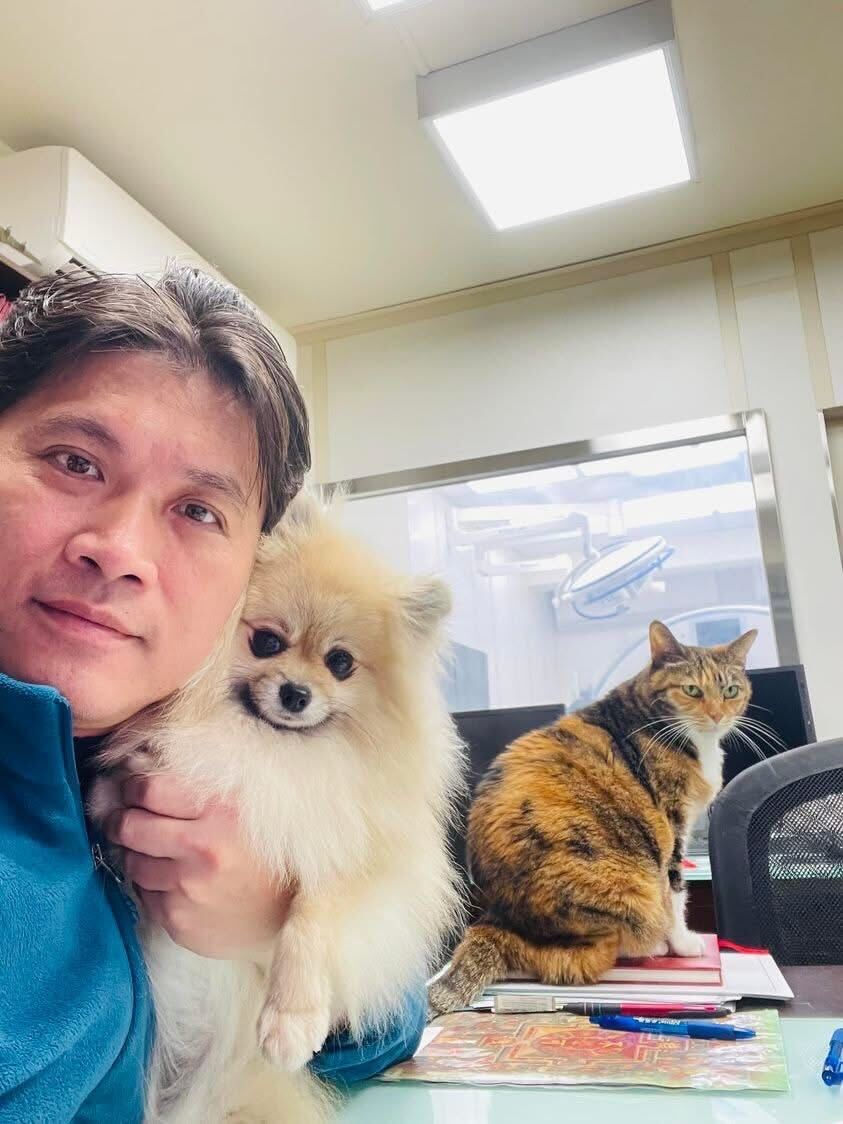Structured Follow-Up for Cardiac Patients: A Practical Guide

Estimated reading time: 4.7 minutes
Once a dog or cat is diagnosed with heart disease and started on medication, structured follow-up evaluations are essential to assess treatment efficacy, disease progression, and the need for therapy adjustments. Below is an evidence-based, practical approach aligned with ACVIM staging and current cardiology standards.
When to Schedule Follow-Up Visits
Follow-up frequency depends on disease severity, medication changes, and patient stability:
Dogs
- Stage B2 (preclinical MMVD/DCM, starting pimobendan):
- Initial follow-up at 4–8 weeks to confirm clinical tolerance, owner adherence, and to address questions.
- Once stable, reassess every 1–3 months, then every 6 months (or sooner if signs change).
- Stage C/D (CHF, on diuretics):
- Recheck 3–7 days after discharge or dose adjustment.
- Re-evaluate in 2–4 weeks to confirm stabilization.
- Stable patients: Every 1–2 months (sooner if tachypnea, cough, syncope, or appetite changes).
Cats
- HCM (preclinical):
- Mild disease: Every 3–6 months.
- Monitor more frequently if remodeling progresses, NT-proBNP rises, or hypertension develops.
- CHF (recently diagnosed):
- Recheck 3–7 days after starting therapy, then every 2–4 weeks until stable.
Key Components of Follow-Up Evaluations
1. Clinical History & Home Monitoring
- Owner-reported metrics:
- Sleeping respiratory rate (SRR) – Goal: ≤25–30/min (persistent elevation suggests CHF relapse).
- Cough (dogs), exercise tolerance, syncope, appetite, thirst/urination, weight trends.
- Cats: Stress levels, open-mouth breathing, acute paralysis with pain (ATE likely)
- Medication adherence: Confirm proper dosing and timing (e.g., pimobendan’s BID schedule).
2. Physical Exam
- Cardiac:
- Murmur intensity/location (changes may indicate progression).
- Gallop sounds (S3/S4 suggest worsening CHF).
- Arrhythmias (irregular pulse, syncope risk).
- Respiratory: Crackles, pleural effusion (cats), increased effort.
- Perfusion: Pulse quality, mucous membranes, jugular distension.
- Hydration/weight: Sudden weight loss/gain may reflect fluid shifts.
- Blood pressure: Treat hypertension (≥160 mmHg systolic in cats).
3. Diagnostic Testing (Tailored to Stage & Stability)
A. Thoracic Radiographs
- When:
-
- Suspected CHF relapse, new/worsening respiratory signs.
- MMVD with CHF: primary tool to titrate diuretics and track congestion. Repeat at decompensation, 7–14 days after significant dose changes, and any time SRR rises or cough/dyspnea/weight-appetite changes occur.
- DCM/other CHF: use with clinical metrics; frequency driven by signs and therapy changes.
- Key findings:
- Pulmonary edema (adjust diuretics if unresolved).
- Cardiomegaly (VHS/VLAS) – Track progression.
- Pleural effusion (cats: may need thoracocentesis).
B. Echocardiography
- Baseline at diagnosis for all.
- Preclinical (B1/B2 MMVD, DCM risk; feline HCM): every 6–12 months, sooner if remodeling, BP, arrhythmia, or biomarkers change.
- MMVD with CHF: not routine. Do a focused echo only with clinical change, poor response, suspected chordal rupture, pulmonary hypertension, new/worsening arrhythmia, or concern for systolic dysfunction (also for pre-anesthesia/advanced therapy decisions).
- DCM with CHF (dogs): repeat about every 3–6 months or with clinical change.
- Feline HCM/HOCM ± CHF: repeat about every 3–6 months or with clinical change to monitor LA size, LVOT gradient/SAM, and thrombus/ Spontaneous echocardiographic contrast (SEC) – ”smoke”; guides beta-blockers/antithrombotics
C. ECG & Arrhythmia Monitoring
- CardioBird AI-ECG and Holter:
- Rapid rhythm analysis for dose adjustments (e.g., diltiazem in AF)
- Suspected arrhythmia (e.g., irregular pulse).
- Syncope, high VPC burden, or atrial fibrillation.
D. Laboratory Tests
- Renal panel + electrolytes (K+, Na+, Cl⁻):
- Check 3–7 days after starting/changing diuretics, ACEi, or spironolactone.
- Azotemia: Determine cause first. If pre-renal (overdiuresis/dehydration), reduce diuretics and rehydrate; otherwise treat the cause and reassess RAAS/diuretic doses; recheck labs in 24–72 h.
- Hypokalemia? Supplement or add spironolactone.
- NT-proBNP:
- Rising levels suggest cardiac stress; falling trends indicate control.
- Useful for ambiguous cases (e.g., cough vs. cardiac vs. respiratory disease).
- Thyroid (cats): Check T4 if > 7 years old.
How Test Results Guide Treatment Adjustments
1. Diuretics (Furosemide/Torsemide)
- Increase dose/frequency if:
- SRR >30/min, recurrent edema, or worsening radiographs.
- Do not routinely reduce once CHF is controlled; maintain the effective dose to prevent relapse. Reduce only if dehydration is likely (vomiting, diarrhea, anorexia, poor intake) or if the underlying disease is resolved/surgically correctable (e.g., PDA, MMVD).
- Refractory CHF: consider torsemide; if adding hydrochlorothiazide, use extreme caution and monitor electrolytes/renal values closely.
2. Pimobendan
- Dogs (MMVD/DCM): Continue indefinitely unless contraindicated.
- Cats (CHF): Use cautiously with LVOTO; monitor for improved perfusion.
3. RAAS Blockade (ACEi/Spironolactone)
- ACE inhibitors (e.g., enalapril):
- Start when hemodynamically stable; monitor for azotemia/hyperkalemia.
- Spironolactone:
- Add in CHF for antifibrotic/K⁺-sparing effects.
4. Arrhythmia Management
- Atrial fibrillation: Diltiazem ± digoxin (dogs); titrate via ECG and monitor serum digoxin level.
- Ventricular arrhythmias: Sotalol/mexiletine if high burden or syncope.
5. Feline-Specific Considerations
- HCM with LVOTO: Beta-blockers (e.g., atenolol) if stable.
- Thromboembolism risk: Clopidogrel for LA enlargement/Spontaneous echocardiographic contrast (SEC) – ”smoke”.
- Pleural effusion: Teach owners to recognize tachypnea/dyspnea; plan for thoracocentesis.
Signs of Control vs. Progression
✅ Controlled Disease:
- SRR ≤30/min, stable weight/appetite, no edema on radiographs, stable NT-proBNP/renal values.
⚠️ Worsening Disease:
- SRR >30/min, recurrent edema, enlarging LA/LV, rising NT-proBNP, new arrhythmias.
Client Communication & Home Care
- Teach SRR monitoring and provide a written “rescue plan” for early CHF signs.
- Emphasize: Medication adherence, low-stress handling (cats), weight logs.
- Remote monitoring: Use CardioBird for rhythm checks after medication changes.
When to Refer to a Cardiologist
- Uncontrolled CHF despite standard therapy.
- Complex arrhythmias requiring advanced management.
- Rapid disease progression (e.g., sudden LA enlargement, refractory effusions).
—The CardioBird Team 🚀🐾


